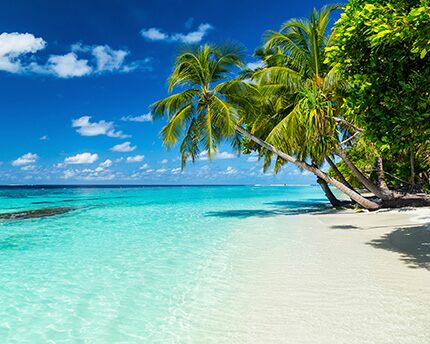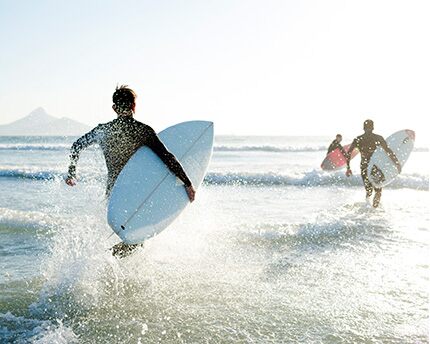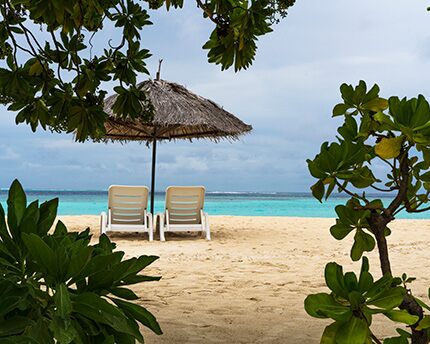If you have seen the film Avatar, you probably remember the glowing plants amid the darkness of the planet Pandora. Yes, the film by James Cameron is science fiction and uses countless special effects, including those to make the plants glow in the night, but these effects are based on a real natural phenomenon known as bioluminescence.
Bioluminescence is the production of natural light by certain living organisms through a chemical reaction in their bodies. It can be seen in certain places around the world such as Laguna Grande lake in Puerto Rico, Toyama Bay in Japan, and the beaches of the Maldives, among others.
What are bioluminescent beaches?
Bioluminescence in the Maldives is also known as the ‘Sea of Stars’ because it looks as if the stars are reflected in the waters that break on the different beaches of the 1,200 paradise islands that make up the archipelago located to the south-west of Sri Lanka in the Indian Ocean.
Bioluminescent beaches are usually seen at night, produced by the light emitted by certain living organisms due to a chemical reaction involving oxygen, luciferase (an enzyme) and luciferin (a protein), which give rise to energy in the form of light.  Luminescence biographyThe chemical reaction occurs in a wide range of organisms including bacteria, fungi, worms and insects as well as certain fish and jellyfish.
Luminescence biographyThe chemical reaction occurs in a wide range of organisms including bacteria, fungi, worms and insects as well as certain fish and jellyfish.
Where to see the phenomenon in the Maldives
The best time to see the magical spectacle of bioluminescence in the Maldives is at night when there is little moonlight. In the case of the Maldives, which do not suffer from light pollution, the phenomenon of bioluminescence occurs due to dinoflagellates, single-cell organisms present in phytoplankton, a type of algae or plankton characteristic of the Maldives.
Dinoflagellates employ bioluminescence as a defence mechanism to ward off predators or to attract a mate for reproductive purposes. The colour of these sparkling bright blue or greenish lights makes the water that laps at the shores of the Maldives look like a spectacular starry sky.
The effect of bioluminescence in the Maldivas is spontaneous and when and where it occurs cannot be predicted. Nevertheless, some things such as strong waves or wind, or walking along the beach at night, cause the dinoflagellates to feel threatened, giving rise to these magical sparks of light. The presence of bioluminescent phytoplankton also depends on other factors such as the temperature of the water (mainly when it is quite hot), salinity, the tide and nutrient levels.
Local fishermen have therefore noticed certain patterns that cause the phenomenon to appear, based on the tide, the moon and the rain. These same fishermen organise tours so you can enjoy the spectacle of bioluminescence in the Maldives. Over the years, Vaadhoo Island has become one of the most popular among tourists for admiring this natural phenomenon, particularly on a beach known as the ‘Sea of Stars’. It was here that one of the most famous scenes from Ang Lee’s Life of Pi was filmed. In it, the character appears in the darkness of the night on a type of raft surrounded by bright blue water.
Vaadhoo Island is located in the Raa Atoll and is virtually uninhabited. Getting there is not easy, however. It can be reached from Malé, which is around 180 kilometres to the south, or from your resort. Modes of transport include seaplanes, motor boats and even a ‘dhoni’, a traditional type of boat in the Maldives.
Tips and recommendations to consider
Firstly, try not to get frustrated if you cannot enjoy the spectacle of bioluminescence on your trip to the Maldives. The phenomenon is spontaneous and it can occur on any one of the more than 1,000 islands that make up the archipelago in the Indian Ocean. However, there are a few things to look out for: Bioluminescence occurs more frequently in high temperatures, on dark nights and when there are waves or strong wind.
Moreover, it is said to be more common in mid summer and early winter. If you want to plan your trip to the Maldives at a time of year when bioluminescence is more likely to occur,
we recommend looking out for the night-time excursions offered by some resorts and hotels to see the spectacle on certain beaches in the Maldives. They are usually organised by fishermen who can look out for certain patterns that indicate bioluminescence will occur.
If you opt to go to the ‘Sea of Stars’ of Vaadhoo Island—the most popular place among tourists for admiring this natural phenomenon—aiming to get a snapshot as a souvenir, make sure you have a good camera or a tripod to get a long exposure so you can really capture the blueish and greenish lights of the seawater. Or make sure you have a mobile phone with a high quality camera.










































































